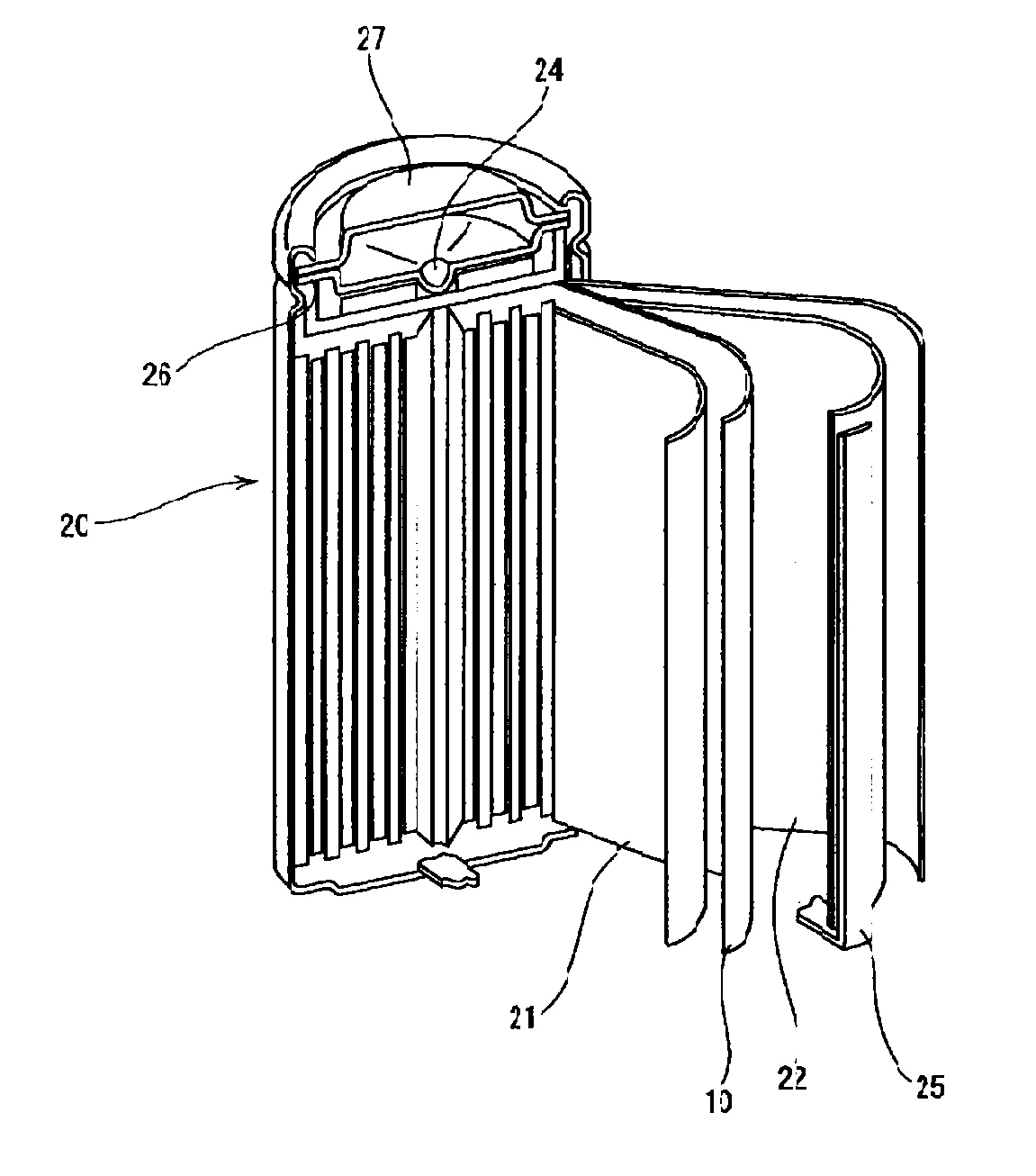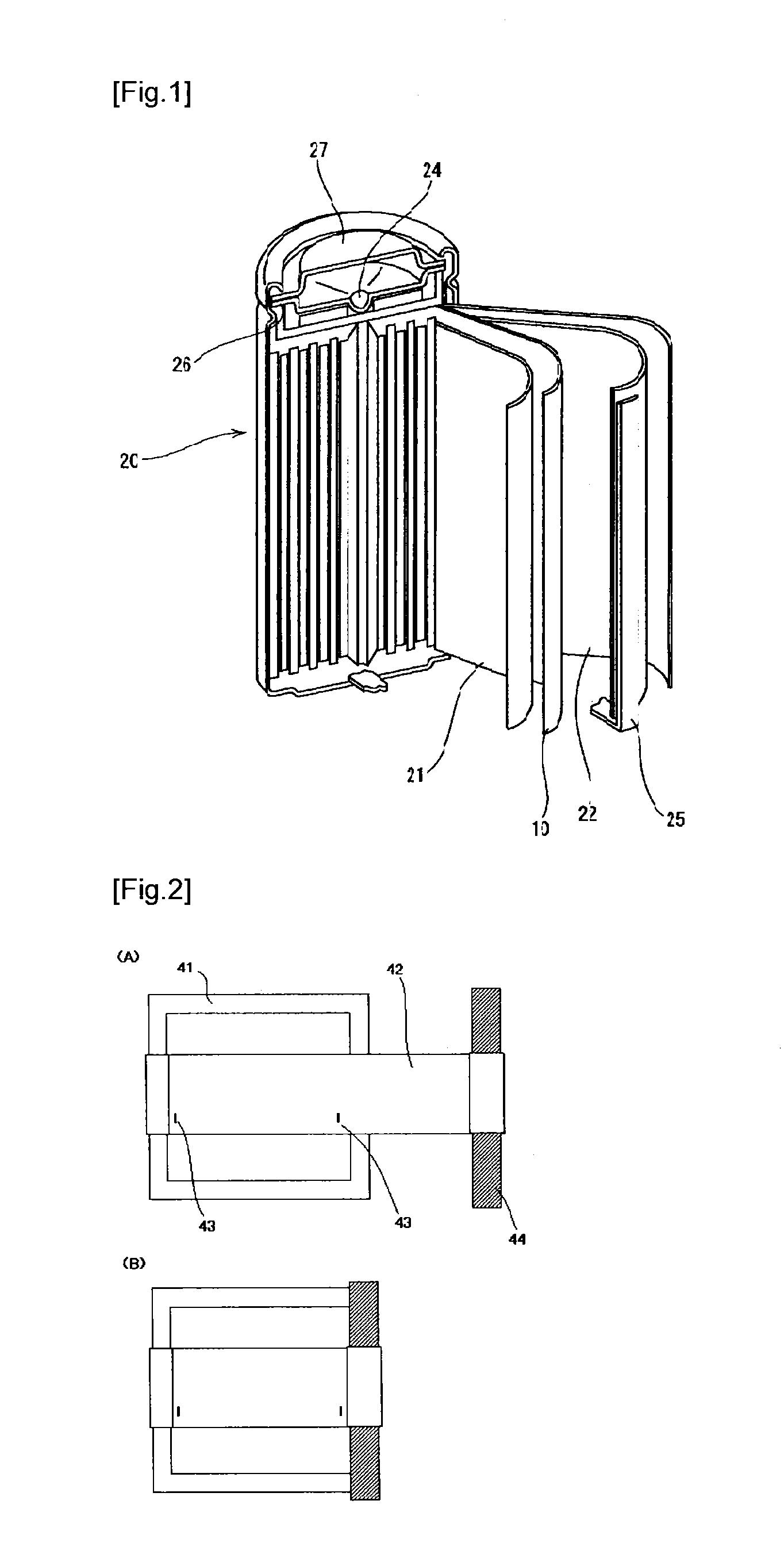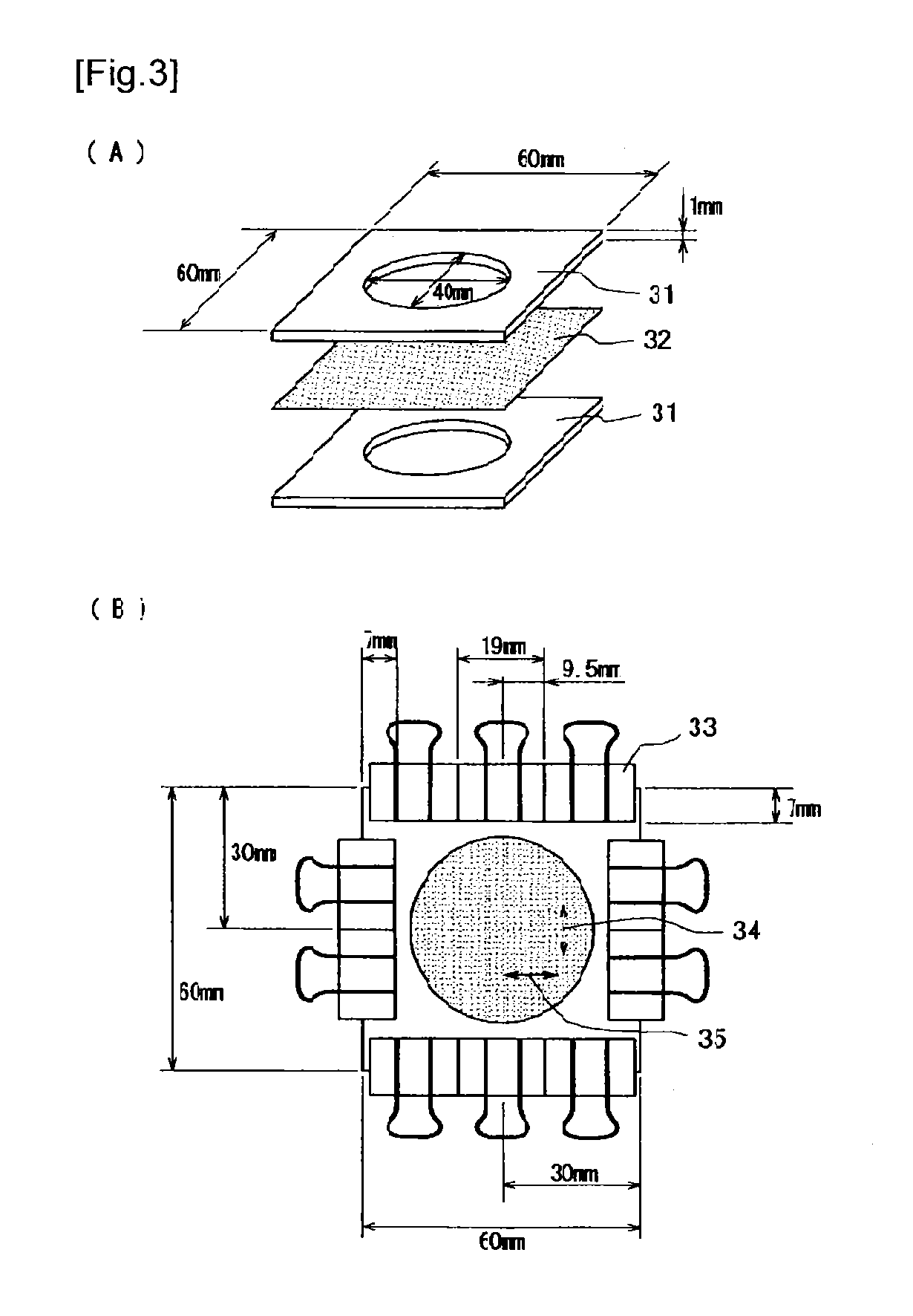Polypropylene series resin porous film, battery separator and battery
a technology of polypropylene series and porous film, which is applied in the direction of electrochemical generators, cell components, cell component details, etc., can solve the problem of not being able to use electrolytic solutions, and achieve the effect of preventing the deterioration of battery properties
- Summary
- Abstract
- Description
- Claims
- Application Information
AI Technical Summary
Benefits of technology
Problems solved by technology
Method used
Image
Examples
example 1
[0218]With respect to 100 parts by mass of polypropylene series resin (manufactured by Prime Polymer Co., Ltd., Prime Polypro F300SV; MFR: 3 g / 10 minutes), 0.2 parts by weight of oxidation inhibitor (manufactured by Ciba Specialty Chemicals Corporation; IRGANOX B225), and 0.2 parts by mass of 3,9-bis[4-(N-cyclohexyl carbamoyl)phenyl]-2,4,8,10-tetraoxaspiro[5.5]undecane as β-crystal nucleating agent were added, melt-kneaded at 270° C. and extruded from a strand die using a co-rotating twin screw extruder (port diameter: 40 mmØ; L / D=32) manufactured by Toshiba Machine Co., Ltd, then, the strand was cooled in water at 30° C. and pelletized with a cutter to obtain a resin composition A1.
[0219]The resin composition A1 was extruded at 200° C. and solidified by cooling with cast rolls at 126° C. to fabricate a pore-free film-shaped object.
[0220]The pore-free film-shaped object was successively biaxially stretched, 4-fold longitudinally at 110° C. followed by 2.0-fold transversally at 145° ...
example 2
[0222]Separately from the resin composition A1, 20 parts by mass of microcrystalline wax (manufactured by Nippon Seiro Co., Ltd., Hi-Mic1090), and 0.2 parts by weight of dibenzylidene sorbitol (manufactured by New Japan Chemical Co., Ltd.; Gelol D) as nucleating agent were added to 80 parts by mass of high density polyethylene (manufactured by Prime Polymer Co., Ltd.; Hi-ZEX3300F; density: 0.950 g / cm3, MFR: 1.1 g / 10 minutes) as polyethylene series resin, melt-kneaded at 230° C. and extruded from a strand die using the same model of co-rotating twin screw extruder then, the strand was cooled in water at 30° C. and pelletized with a cutter to obtain a resin composition B1.
[0223]The resin compositions A1 and B1 were extruded at 200° C. with different extruders, passed through a feed block for two species and three layers, co-extruded using a T-die for multi-layer molding, layered in such a way that the film-thickness ratios after stretching were A1 / B1 / A1=3.5 / 1 / 3.5, and then solidified ...
example 3
[0226]The resin compositions A1 and B1 were extruded at 200° C. with different extruders, passed through a feed block for two species and three layers, co-extruded using a T-die for multi-layer molding, layered in such a way that the film-thickness ratios after stretching were A1 / B1 / A1=3.5 / 1 / 3.5, and then solidified by cooling with cast rolls at 125° C. to fabricate a layered pore-free film-shaped object.
[0227]The layered pore-free film-shaped object was successively biaxially stretched, 4.0-fold longitudinally at 120° C. followed by 2.0-fold transversally at 98° C., and then relaxed 6% transversally at 115° C. to obtain a layered porous film (sample).
[0228]Measurements and evaluations of various properties of the obtained layered porous film (sample) were carried out, which results are compiled in Table 1.
PUM
| Property | Measurement | Unit |
|---|---|---|
| elongation | aaaaa | aaaaa |
| porosity | aaaaa | aaaaa |
| porosity | aaaaa | aaaaa |
Abstract
Description
Claims
Application Information
 Login to View More
Login to View More - R&D
- Intellectual Property
- Life Sciences
- Materials
- Tech Scout
- Unparalleled Data Quality
- Higher Quality Content
- 60% Fewer Hallucinations
Browse by: Latest US Patents, China's latest patents, Technical Efficacy Thesaurus, Application Domain, Technology Topic, Popular Technical Reports.
© 2025 PatSnap. All rights reserved.Legal|Privacy policy|Modern Slavery Act Transparency Statement|Sitemap|About US| Contact US: help@patsnap.com



